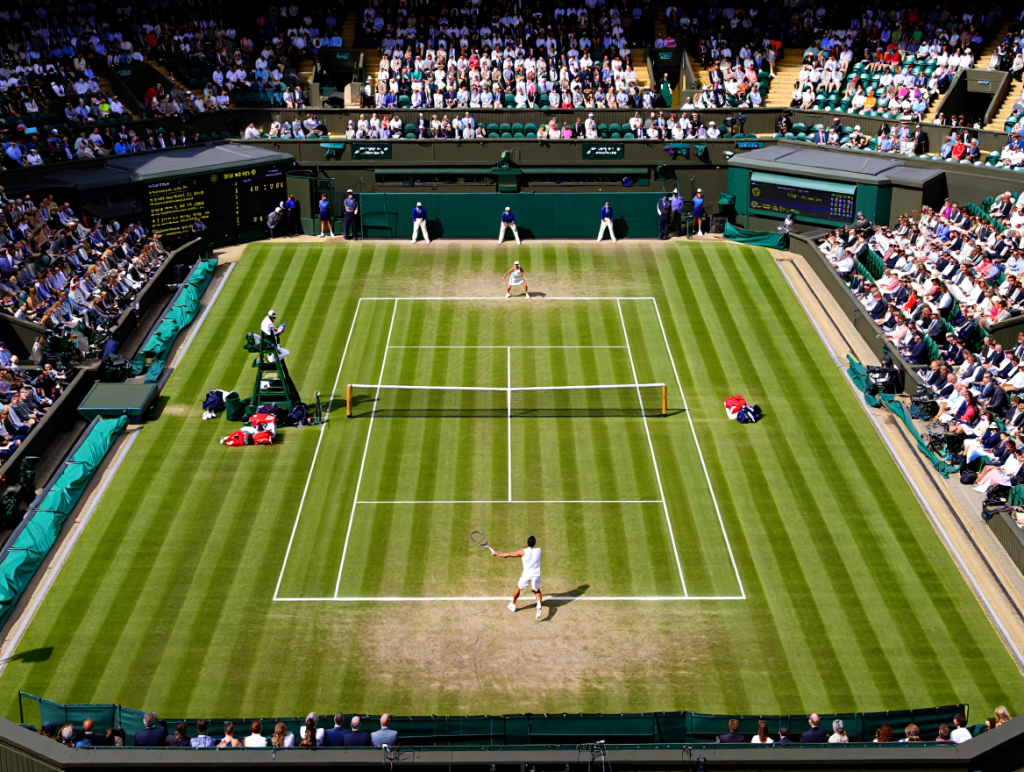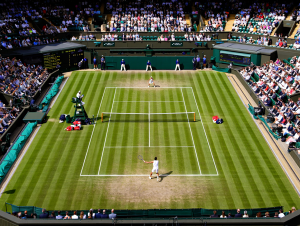
In the golden eras of elite sport, dynasties and singular dominance were common. Names like Serena Williams, Roger Federer, Michael Jordan, Tiger Woods, and Usain Bolt became synonymous with winning—not just once, but repeatedly over the span of years, sometimes even decades. Their supremacy felt inevitable, almost mythic, as if their genetic gifts and competitive drive placed them far beyond the reach of rivals.
But in today’s hyper-optimized sports landscape, those dynasties have become far rarer. The tools that once gave champions a competitive edge—advanced nutrition, tailored training regimes, data analytics, and psychological coaching—are now widely accessible. With everyone pushing the limits of human performance, we are seeing a new age in sport: one where the difference between champion and runner-up is measured in millimeters and milliseconds, not miles or minutes. Wimbledon 2025 offers a perfect snapshot of this trend—where the finals are no longer foregone conclusions and anyone, truly anyone, can win.
The Age of Outliers
To understand today’s parity in sport, it’s essential to look back at how dominant certain athletes once were. In tennis, Roger Federer, Rafael Nadal, and Novak Djokovic defined nearly two decades of men’s Grand Slam tournaments. Between 2003 and 2022, the trio won 63 of the 77 major titles—a staggering 81.8%. Serena Williams achieved similar dominance on the women’s side, winning 23 Grand Slam singles titles between 1999 and 2017.
Their dominance wasn’t just about talent; it was also about early adoption of cutting-edge performance strategies. Federer had a uniquely efficient style that extended his career. Djokovic overhauled his diet, eliminating gluten and dairy, which he credits for improved stamina and recovery. Williams combined raw power with precision training, honed with one of the most stable coaching teams in tennis history.
But these champions were ahead of their time. Today, what was once pioneering is now protocol.
Optimization for All
The 2020s marked a turning point: no longer were high-tech solutions reserved for elite few. Every aspiring professional athlete now works with a multidisciplinary team—nutritionists, physiotherapists, biomechanists, mental coaches, data analysts, and even sleep specialists. Young tennis players, for example, train with motion-capture systems that analyze their biomechanics frame-by-frame. Their diets are tracked with apps, and their hydration levels are monitored in real time. Recovery tools like cryotherapy, infrared saunas, and pneumatic compression boots are standard, not luxuries.
Access to such optimization doesn’t guarantee greatness, but it removes the large margins of advantage that once separated the champions from the challengers. This has created a deep talent pool where physical conditioning, tactical awareness, and technical ability are near-universal. In effect, the ceiling has risen—but so has the floor.
The Level Playing Field at Wimbledon
Wimbledon, long a showcase for tennis aristocracy, is now a stage where new contenders emerge each year. In 2024, Jannik Sinner won his first Wimbledon title, breaking the Big Three’s near two-decade grip on the tournament. In the same year, unseeded players like Ben Shelton and Holger Rune reached late-stage matches, defeating top-ranked opponents with power and precision.
Women’s tennis has been even more wide open. Since Serena Williams’ peak years, major titles have been shared among a large pool of athletes—Ash Barty, Iga Świątek, Aryna Sabalenka, Markéta Vondroušová, and Elena Rybakina, among others. Each brings a distinct playing style, yet none have been able to string together a reign of dominance like Serena or Steffi Graf.
The result? Every final feels like a coin flip. A wild card can dethrone a top seed. The so-called “favorites” have to earn every point. It’s exhilarating, but also exhausting—for fans, pundits, and players alike. This parity doesn’t diminish greatness, but it reframes it. Winning today means rising above a densely packed field of near-equals, not merely maintaining the status quo.
Why We May Never See Another Federer or Bolt
Consider track and field, where the margin between gold and bronze is often less than a tenth of a second. Usain Bolt was a once-in-a-century talent, combining outrageous top-end speed with a body that somehow avoided the wear-and-tear of elite sprinting. But the field has now caught up in terms of science and preparation. No one is likely to win three Olympic 100-meter golds in a row again, not because the athletes are less capable, but because everyone is so finely tuned.
Or take basketball. LeBron James’ longevity and consistency have been unmatched, but in the modern NBA, load management, analytics, and training routines have allowed many more players to remain elite well into their 30s. Teams rise and fall faster; dynasties are shorter-lived. The margin of dominance has tightened.
In golf, Tiger Woods changed everything with his commitment to strength training, course management, and mental toughness. Now, every player on the PGA Tour lifts weights, tracks every shot via data, and hires mental coaches. Tiger’s edge has been absorbed by the collective.
The Democratization of Greatness
This evolution in sports performance mirrors broader societal trends—access to information, technology, and best practices has become democratized. Just as social media gave every musician a potential audience, sports optimization tools have given every athlete a chance to excel.
In this context, greatness no longer looks like a single figure towering over the rest. Instead, it’s more about consistency, resilience, and seizing the moment when the field is crowded with contenders.
Today’s champions are not just stronger or faster; they are smarter and more adaptive. Their victories are less about dominance and more about execution. They win not because the field is weak, but because they find a way to rise, briefly, above a swarm of equals.
Conclusion: Glory in the Grind
The romantic idea of a singular hero dominating their era may be fading, but a new form of drama has taken its place. Every match, tournament, and season is now a test of marginal gains, of tiny advantages, of who can best optimize their already-optimized bodies and minds.
At Wimbledon, in 2025 and beyond, this means any given final could go to a seasoned veteran or a breakout 19-year-old. The magic lies not in inevitability, but in uncertainty. Sport has become more volatile, but also more beautiful for it. Glory is no longer about how long you dominate, but how well you navigate a sea of equally well-prepared competitors.
We may never see another Federer or Serena in terms of titles and reigns, but we will see hundreds of perfectly prepared athletes chasing greatness—knowing that, on any given day, it could be theirs.



